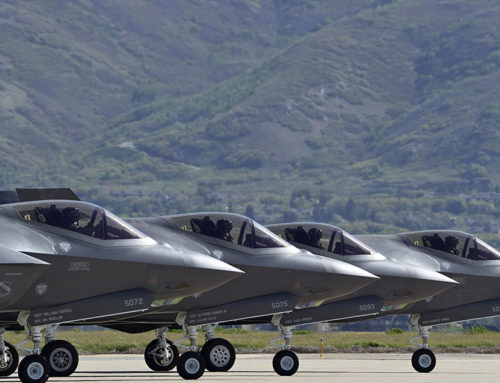If you are paying attention to the Winter Olympics, you may have read about the embarrassing debut of the Under Armour Mach 39 super suits American speed skaters were wearing in Sochi. Failure to produce even one speed skating medal for the Americans (despite a pretty talented and well-ranked team heading into the games) has Under Armour on the defensive – the company’s stock price even took a hit.
Critics are paying less attention to Under Armnour's high tech, aerodynamics partner, defense giant Lockheed Martin. But if you look at Lockheed Martin’s recent track record with the F-35, well on its’ way to becoming the most expensive plane in U. S. military history, you have to wonder why Under Armour wanted to partner with it in the first place.
The F-35’s failures go beyond its exorbitant cost. For a plane that is supposed to be stealthy, it is an order of magnitude louder than the planes it is replacing, particularly the short take-off and landing variant being tested for the Marine Corps. Software development for the plane has fallen behind schedule, as detailed in a recent report by the Pentagon’s Office of Test and Evaluation. This, in turn, has a negative impact on the ability to complete development and to flight test the initial combat software package prior to the Marine Corps’ stated desire to have operational aircraft in the last half of 2015.
In many ways, the F-35 was doomed from the start. The plane was originally conceived as a so-called “joint” development program with the Air Force, Navy and Marine Corps, all looking to produce a next generation aircraft to replace, among others, the F-16, the F/A-18 and the AV-8B. And here is where the problems start. These three aircraft have vastly different capabilities, and these three military services have vastly different requirements.
The theory behind these joint aircraft development programs is that, by all three services pitching in to develop the aircraft, duplicative development costs can be avoided and the government saves a lot of money. That’s the theory. But these huge joint development programs rarely end well, as anyone who remembers the A-12 can attest.
The Rand Corporation recently found that joint development leads to increased risk, increased complexity and increased weight in aircraft programs. And all three of these issues will lead, eventually, to increased costs.
Even if you accept the current Pentagon cost estimates for what each variant of the F-35 will cost, and we think these estimates are low, there are real savings to be had in ending the F-35 program and continuing on with the most modern versions of the current aircraft. In the final version of the Department of Defense Authorization bill for this fiscal year, there is a total of $29.2 billion to be spent on procurement of all Navy, Marine Corps, and Air Force aircraft. Of that, about 20 percent of the total will be spent just on F-35 procurement: $6 billion. The next highest level of procurement funding for any aircraft in the bill is $3.2 billion for 16 maritime patrol aircraft for the Navy – the P-8. There is also $1.9 billion in R&D for the F-35. That brings spending on the F-35 in fiscal year 14 to just under $8 billion.
At Taxpayers for Common Sense, we did a recent analysis of the money the Pentagon could save by buying F-16s and F/A-18s instead of F-35s. Just in the current fiscal year, more than $4.5 billion could be saved by buying the most capable, newest versions of these aircraft rather than the F-35s that were in the budget request. And keep in mind, the F/A-18 and the F-16 are among the most highly capable military jets anywhere in the world. You don’t need to take my word for it. Here is what the Navy says about the F/A-18. And this is how the Air Force describes the F-16. We are not in danger of being outclassed in the air by likely adversaries.
So while Lockheed Martin may be able to skate by the controversy in Sochi and let Under Armour take all the heat, this massive defense contractor shouldn’t be allowed to fly under the radar on the issue of the enormous, and mounting, costs of the F-35.














Get Social